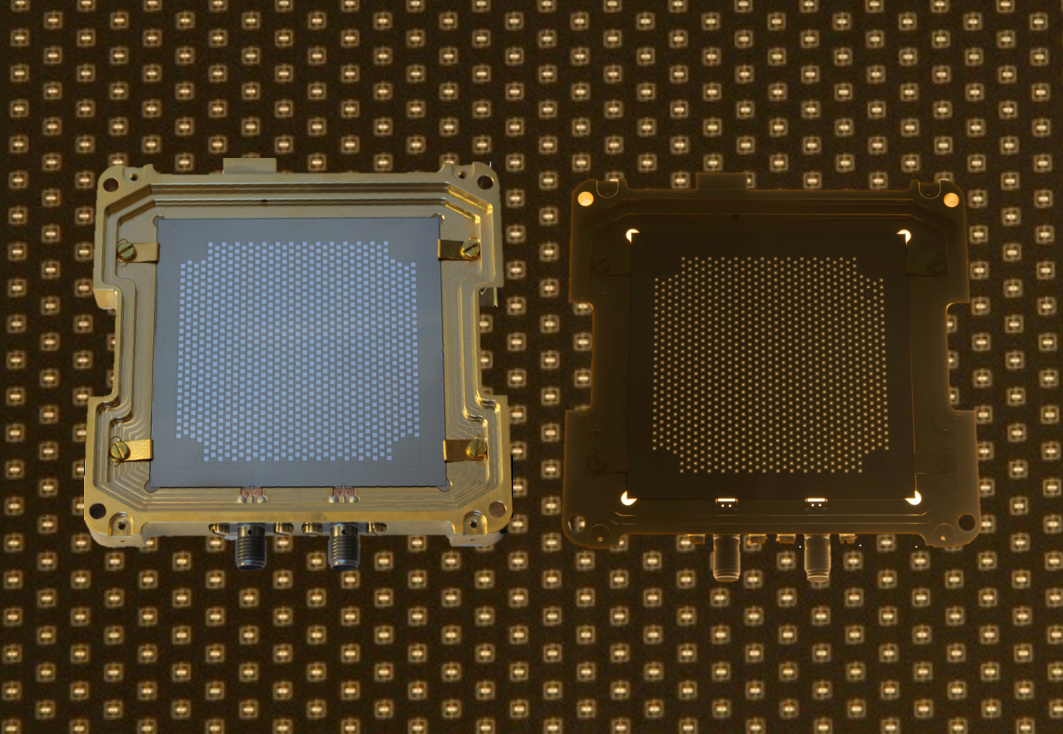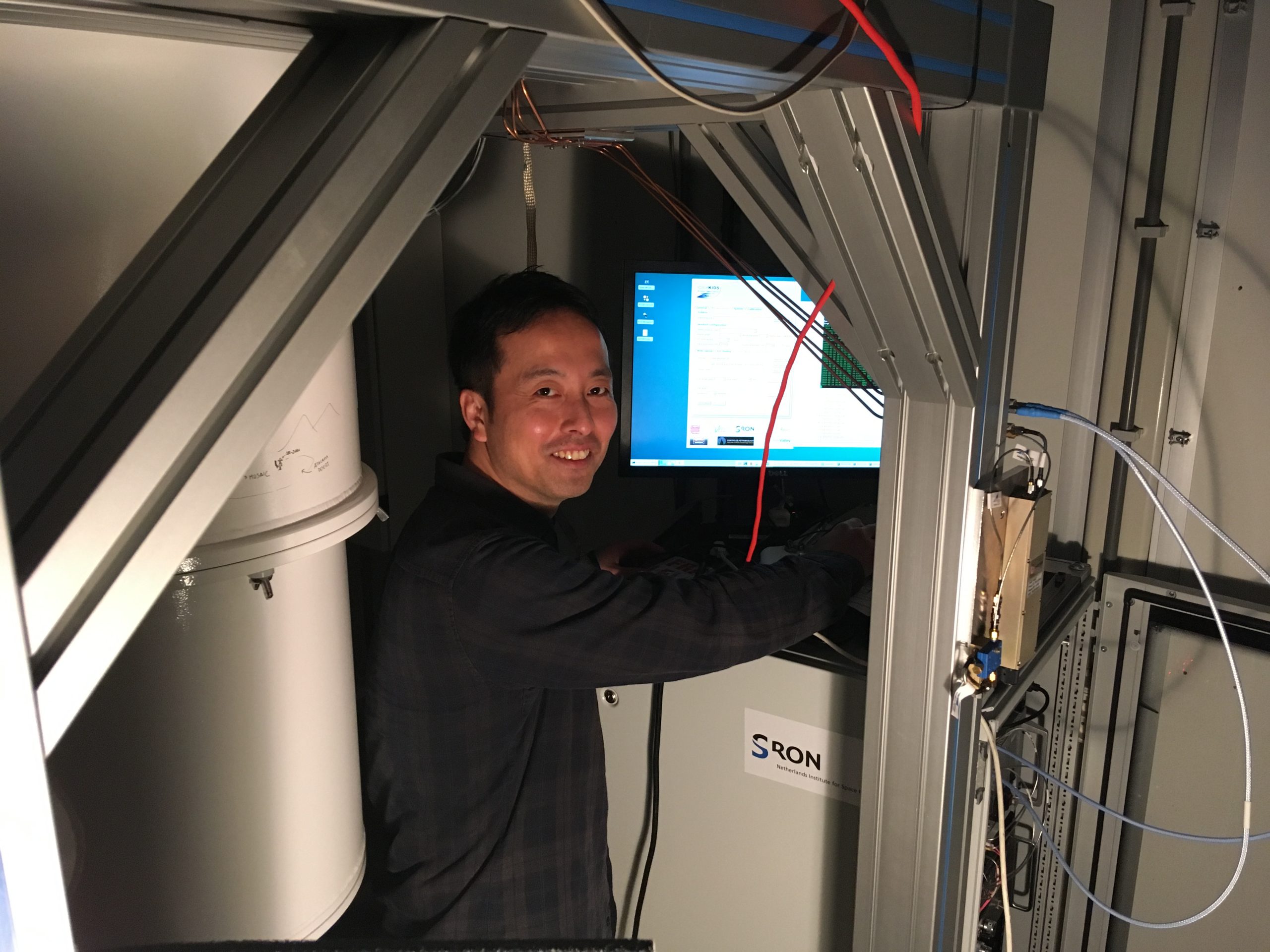Astronomen hebben steeds gevoeligere detectoren nodig om hun begrip over het heelal verder uit te breiden. Microwave Kinetic Inductance Detectors (MKIDs) vormen een veelbelovende techniek voor onder meer ver-infraroodtelescopen, die daarmee een miljoen keer gevoeliger kunnen worden. Onderzoekers van SRON en de TU Delft hebben nu een belangrijke horde genomen in de ontwikkeling van de detectoren, door ze beter bestand te maken tegen storende kosmische straling. Ze publiceren hun bevindingen in Applied Physics Letters.

De ontwikkeling van steeds gevoeligere ruimtecamera’s gaat in kleine stapjes. Een enkele sensor moet bijvoorbeeld eerst een werkende pixel worden die je kunt uitlezen. Daarna kun je proberen het aantal pixels op te schroeven zonder dat ze door elkaar gaan ‘praten’. Vervolgens moeten de pixels een breder palet aan stralingskleuren kunnen meten. SRON-onderzoekers, waaronder eerste auteur Kenichi Karatsu, doorlopen deze stappen met Microwave Kinetic Inductance Detectors (MKIDs, die een kandidaat vormen om op NASA’s toekomstige ver-infrarood Origins Space Telescope te komen.
Een hobbel in de ontwikkeling die speciale aandacht verdient is kosmische straling. Als die het materiaal raakt waarop de detectoren zijn gemaakt, komt er energie vrij. Dat kan detectoren steeds eventjes verblinden of soms zelfs helemaal stuk maken. Gelukkig gaan MKIDs niet snel stuk, ontdekte Karatsu al in 2016. Maar in de strijd tegen het verblindende effect heeft de postdoc nu grote winst geboekt.
Karatsu en zijn collega’s vergeleken en testten in het lab vier grote arrays van elk bijna duizend MKID-pixels. Een conventionele array, een array met een supergeleidende film als een soort bliksemafleider en twee arrays waarbij de MKID-pixels op membranen zweven, veilig geïsoleerd van de draagstructuur waarin de storende energie ontstaat.
In de arrays met de beschreven oplossingen was de verblindingstijd 40 keer korter dan in de conventionele array. Rekenmodellen laten zien dat de verblindingstijd onder de 1% kan komenop een specifieke plek in de ruimte, zoals Lagrangepunt 2 of een vergelijkbare baan ver van de Aarde. De nieuwe techniek komt misschien ook van pas bij grote supergeleidende qubit-arrays voor toekomstige quantumcomputers.
Publicatie
K. Karatsu, A. Endo, J. Bueno, P. J. de Visser, R. Barends, D. J. Thoen, V. Murugesan, N. Tomita, and J. J. A. Baselmans, ‘Mitigation of cosmic ray effect on microwave kinetic inductance detector arrays’, Applied Physics Letters

——————————————————————————————————————–
——————————————————————————————————————–
Promising far-infrared detectors better protected against cosmic rays
Astronomers need ever more sensitive detectors to broaden their understanding of the Universe. Promising new technology for far-infrared telescopes is called Microwave Kinetic Inductance Detectors (MKID), which could make them a million times more sensitive. Researchers from SRON and TU Delft have now taken a big hurdle in the development of these detectors, by protecting them against harmful cosmic rays. Publication in Applied Physics Letters.
It takes small steps to develop ever more sensitive space telescopes. For example, a single sensor first has to become a functioning pixel that you can read out. Then you can try to increase the number of pixels without inducing cross-talk between them. Next, the pixels should be able to measure a wider palette of colors. SRON researchers, including first author Kenichi Karatsu, follow these steps with Microwave Kinetic Inductance Detectors (MKIDs), which are a candidate to be part of NASA’s future far-infrared Origins Space Telescope.
One hurdle in the development that deserves special attention is cosmic rays. When those hit the material on which the detectors are made, energy is released. This can briefly blind the detectors or even ruin them. Fortunately, MKIDs don’t break that quickly, as Karatsu discovered in 2016. But in the fight against the blinding effect, the postdoc has now won an important battle.
Karatsu and his colleagues compared and tested four large arrays, each with almost a thousand MKID pixels. One conventional array, one array with a superconducting film acting as a lightning rod and two arrays on which the MKID pixels float on membranes, safely isolated from the support structure in which the harmful energy is generated.
Within the arrays containing the solutions described above, the ‘dead time’ was forty times shorter than in a conventional array. Simulations show that the dead time can reach below 1% in specific points in space, such as Lagrange point 2 or a similar orbit far from Earth. The new technology might also be useful in large superconducting qubit arrays for future quantum computers.
Publication
K. Karatsu, A. Endo, J. Bueno, P. J. de Visser, R. Barends, D. J. Thoen, V. Murugesan, N. Tomita, and J. J. A. Baselmans, ‘Mitigation of cosmic ray effect on microwave kinetic inductance detector arrays’, Applied Physics Letters


